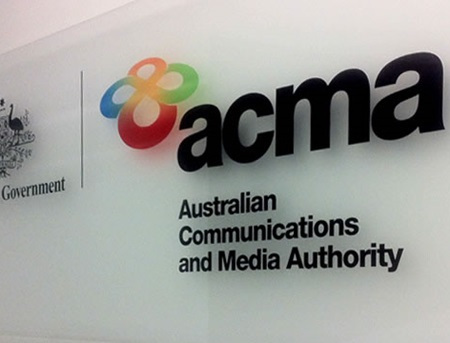The Australian Communications and Media Authority (ACMA) hopes to support new innovative technologies and wireless data communications systems, including those underpinning 5G, with a range of fresh updates to the country’s class licensing arrangements.
The ACMA’s proposed variation to Australia’s Radiocommunications (Low Interference Potential Devices) Class Licence came into effect on 19 August, with the new licensing arrangements expected to support new technology applications and “bring Australia into line with international arrangements”.
Among the changes, which are contained in the Radiocommunications (Low Interference Potential Devices) Class Licence Variation 2019 (No. 1), are new arrangements for ‘all transmitters’ in the 57–64 GHz band aimed at supporting new interactive motion sensing technology that operates in this particular frequency range and can be used to enable touchless control of device functions or features.
Other changes include an expansion of frequency range for 60 GHz (57–66 GHz) data communication systems to now cover 57–71 GHz, for both indoor and outdoor usage, which the ACMA suggests will support wireless gigabit systems with applications such as backhaul for 5G and Wi-Fi.
The updates also saw the revision of arrangements for underground transmitters in certain bands, a move designed to support fixed and mobile services from 70–520 MHz to provide improved support for underground activities, such as mining.
Additionally, the new class licensing variation includes a revision of arrangements for radars in the 76–77 GHz frequency band in order to provide support for radar use in rail crossing and road safety applications.
There are also new arrangements for ground and wall penetration radar (30–12,400 MHz) to facilitate the usage of applications across a variety of industry sectors, such as agriculture, railways and underground pipe detection in the telecommunication industry.
Some of the new changes also work to align existing arrangements for ultra-wideband devices with United States and European arrangements for generic, indoor and outdoor devices operating in 3,100–3,400 MHz and 8,500–9,000 MHz ranges, along with aircraft applications (6,000–8,500 MHz), aimed at further supporting the use of such devices in Australia.
The ACMA first put the call out to industry for comment and feedback on its proposed updates to class licensing arrangements in December 2018. The updates were to be implemented by varying the Radiocommunications (Low Interference Potential Devices) Class Licence 2015 (LIPD Class Licence).
Now that the updates are in effect, the ACMA invites further suggestions from industry and individuals on devices and technologies for “possible future updates” to class licensing arrangements of the Low Interference Potential Devices Class Licence.

